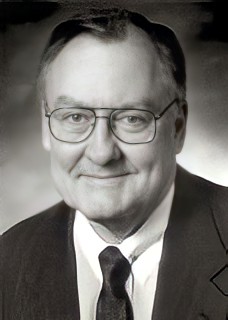
The 1956 United States presidential election was the 43rd quadrennial presidential election. It was held on Tuesday, November 6, 1956. The popular incumbent President, Republican Dwight D. Eisenhower, successfully ran for re-election. The election was a re-match of 1952, as Eisenhower's opponent in 1956 was Adlai Stevenson, a former Illinois governor whom Eisenhower had defeated four years earlier.
The Solidarity Party was an American political party in the state of Illinois. It was named after Lech Wałęsa's Solidarity movement in Poland, which was widely-admired in Illinois at the time.
Janice Hart was an unsuccessful candidate for the office of Illinois Secretary of State in 1986.
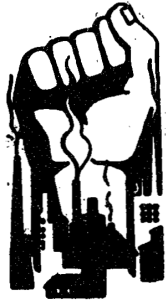
The U.S. Labor Party (USLP) was a political party formed in 1973 by the National Caucus of Labor Committees (NCLC). It served as a vehicle for Lyndon LaRouche to run for President of the United States in 1976, but it also sponsored many candidates for local offices and Congressional and Senate seats between 1972 and 1979. After that the political arm of the NCLC was the National Democratic Policy Committee. The party was the subject of a number of controversies and lawsuits during its short existence.
Lyndon LaRouche's U.S. presidential campaigns were a controversial staple of American politics between 1976 and 2004. LaRouche ran for president on eight consecutive occasions, a record for any candidate, and has tied Harold Stassen's record as a perennial candidate. LaRouche ran for the Democratic nomination for President of the United States seven times, beginning in 1980. His current Political Action Committee is called "LaRouche PAC."
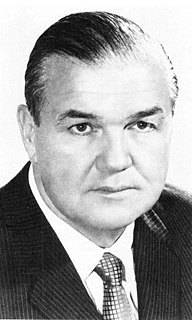
Michael J. Howlett Sr. was a Democratic politician from the U.S. state of Illinois, who was elected several times to statewide office.
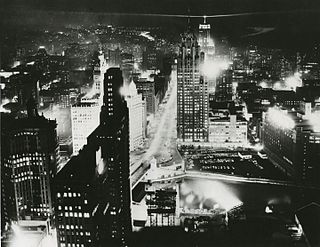
The 1956 Democratic National Convention nominated former Governor Adlai Stevenson of Illinois for President and Senator Estes Kefauver of Tennessee for Vice President. It was held in the International Amphitheatre on the South Side of Chicago, Illinois August 13–August 17, 1956. Unsuccessful candidates for the presidential nomination included Governor W. Averell Harriman of New York, Senator Lyndon B. Johnson of Texas, and Senator Stuart Symington of Missouri.

George Edward Sangmeister was a member of the United States House of Representatives. He originally represented Illinois' 4th District, before it was renumbered as the 11th district.

The 1996 Democratic presidential primaries were the selection process by which voters of the Democratic Party chose its nominee for President of the United States in the 1996 U.S. presidential election. Incumbent President Bill Clinton was again selected as the nominee through a series of primary elections and caucuses culminating in the 1996 Democratic National Convention held from August 26 to August 29, 1996, in Chicago, Illinois.

United States gubernatorial elections were held on November 4, 1986 in 36 states and two territories. The Democrats had a net loss of eight seats during this election, which coincided with the Senate and the House elections.

The 1960 Democratic presidential primaries were the selection process by which voters of the Democratic Party chose its nominee for President of the United States in the 1960 U.S. presidential election. Senator John F. Kennedy of Massachusetts was selected as the nominee through a series of primary elections and caucuses culminating in the 1960 Democratic National Convention held from July 11 to July 15, 1960, in Los Angeles, California.

The 1952 Democratic presidential primaries were the selection process by which voters of the Democratic Party chose its nominee for President of the United States in the 1952 U.S. presidential election. Although the popular vote proved conclusive, the 1952 Democratic National Convention held from July 21 to July 26, 1952, in Chicago, Illinois, was forced to go multiballot.

Electoral history of Adlai Stevenson, 31st Governor of Illinois (1949-1953), 5th United States Ambassador to the United Nations (1961-1966) and Democratic Party nominee for President of the United States in 1952 and 1956.

The 2010 Illinois gubernatorial election took place on November 2, 2010. Incumbent Democratic Governor Pat Quinn sought and was elected to a full term in office. Quinn was elected as the Democratic nominee, the Illinois Green Party nominee was attorney and 2006 nominee Rich Whitney, the Republican nominee was State Senator Bill Brady, the Libertarian Party nominee was Lex Green, and Scott Lee Cohen ran as an independent. Governor Quinn won election to a full term in a very close race, beating Senator Brady by only about 32,000 votes, despite Brady winning in 98 of 102 Illinois counties.
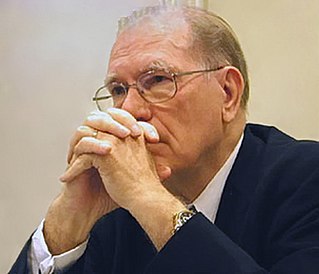
The LaRouche movement is a political and cultural network promoting the late Lyndon LaRouche and his ideas. It has included many organizations and companies around the world, which campaign, gather information and publish books and periodicals. The movement promotes a revival of classical art and a greater commitment to science; advocates the development of major economic infrastructure projects on a global scale; and calls for a reform of the world financial system to encourage investment in the physical economy and suppress financial speculation.

The 2010 California lieutenant gubernatorial election was held on November 2, 2010 to choose the Lieutenant Governor of California. The primary election was held on June 8, 2010. Incumbent Republican Lieutenant Governor Abel Maldonado, who was appointed to the office, ran for election to a full term and was defeated by Democratic Mayor Gavin Newsom of San Francisco. Lieutenant Governor Newsom started his four-year term on 10 January 2011.

The Maryland gubernatorial election of 1994 was held on November 8, 1994. Incumbent Democratic Governor William Donald Schaefer was ineligible for re-election. Prince George's County Executive Parris Glendening emerged victorious from the Democratic primary after defeating several candidates. Former State Delegate Ellen Sauerbrey, who would also be the 1998 Republican nominee for Governor, won her party's nomination. The election between Glendening and Sauerbrey was extremely contentious; the Sauerbrey campaign challenged the results. Ultimately, Glendening prevailed over Sauerbrey.
